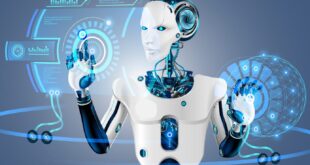In today’s digital age, the interplay between science in information technology (IT) is profound and transformative. Information technology has reshaped industries, altered how we communicate, and revolutionized our daily lives. This post explores the scientific principles that underpin IT, delving into case studies that illustrate its real-world applications and effects. By following the PAS (Problem-Agitate-Solution) framework, we will dissect how scientific advancements have fueled technological innovations, examine some of the challenges faced, and propose potential solutions to harness the full power of IT.
The Problem: Understanding the Gap Between Science and IT
Despite the enormous strides made in IT, several critical issues still persist. One major challenge is the lack of awareness about the fundamental scientific concepts that drive IT innovations. Many professionals in the field operate without a solid understanding of the underlying principles, leading to inefficiencies and missed opportunities.
Factual Data:

According to a survey by the International Association of Computer Science and Information Technology (IACSIT), nearly 60% of IT professionals believe that a deeper understanding of the science behind their tools and processes would enhance their effectiveness in their roles. This gap in knowledge can result in miscommunication among team members and lead to ineffective technology deployment, affecting overall productivity.
Moreover, cybersecurity threats are on the rise, with cyberattacks costing businesses approximately $3 trillion in damages annually, as reported by Cybersecurity Ventures. These issues highlight the need for a robust scientific framework in IT to improve security measures and overall system functionality. In an era where data breaches and cyber threats are increasingly common, the repercussions of ignoring the scientific principles behind IT can be severe.
Agitate: The Consequences of Ignoring Science in IT
When the scientific principles behind information technology are overlooked, the consequences can be dire. For example, the 2017 Equifax data breach, which exposed sensitive information of 147 million people, was partly due to the company’s failure to apply scientific rigor to their cybersecurity protocols. The breach not only resulted in an estimated $4 billion in total costs, including remediation, legal fees, and loss of consumer trust, but it also highlighted a critical flaw in the company’s understanding of risk management and data protection.
Additionally, businesses often suffer from inefficient systems due to a lack of scientific understanding in IT practices. A company implementing new software without a scientific evaluation of its compatibility with existing systems may experience significant downtime, resulting in lost productivity and revenue. According to a study by the Project Management Institute, organizations waste around 14% of their resources due to poor project performance linked to inadequate scientific analysis and planning. This wastage is not merely financial; it can also lead to employee dissatisfaction and high turnover rates, exacerbating the problem.
Solution: Bridging the Gap Through Science in IT
To tackle these issues, it’s crucial to bridge the gap between science and information technology. This can be achieved through a few key strategies:
1. Education and Training
Emphasizing the importance of scientific principles in IT curricula can equip future professionals with the necessary skills. Educational institutions should incorporate courses focused on data science, cybersecurity, and system architecture, enabling students to understand the scientific basis of IT practices. For example, universities could offer interdisciplinary programs that combine computer science with behavioral science to better prepare students for real-world challenges.
2. Interdisciplinary Collaboration
Encouraging collaboration between scientists and IT professionals can lead to innovative solutions. For instance, data scientists can work alongside cybersecurity experts to develop more effective threat detection systems based on scientific data analysis. The synergy between these fields can result in the creation of advanced algorithms capable of predicting and neutralizing threats before they can cause damage.
3. Adopting Scientific Methodologies

Organizations should adopt scientific methodologies in their IT processes. Implementing techniques like hypothesis testing and experimental design can help companies evaluate the effectiveness of new technologies before full-scale implementation. For example, Google employs a data-driven approach in its product development, utilizing A/B testing to analyze user responses to changes in its platforms. This method allows for continuous improvement and optimization of user experience.
Case Study: Google’s Data-Driven Approach
Google’s emphasis on scientific methodologies is evident in its product development strategy. By leveraging vast amounts of data, the company can make informed decisions about feature changes and new product launches. A notable example is the launch of Google Search, which has undergone continuous refinement since its inception.
In 2019, Google reported that its search algorithms processed over 3.5 billion searches daily, showcasing the scale at which scientific principles drive its operations. By applying scientific techniques, Google has not only enhanced user experience but also maintained its position as a leader in the technology sector. The company’s ability to adapt to user behavior and preferences is rooted in its commitment to scientific analysis, allowing it to stay ahead of competitors.
The Role of Artificial Intelligence
Artificial intelligence (AI) is another area where science significantly influences information technology. AI systems rely on machine learning algorithms, which are rooted in statistical and mathematical principles. These algorithms learn from data patterns, enabling machines to make predictions or decisions without explicit programming.
Factual Data: According to a report by McKinsey, AI could potentially contribute up to $13 trillion to the global economy by 2030. This staggering figure highlights the importance of understanding the scientific underpinnings of AI technologies to fully leverage their capabilities. Companies that integrate AI effectively can enhance operational efficiency and gain a competitive edge in their respective markets.
In a practical application, AI-driven chatbots have transformed customer service across various industries. For instance, companies like Amazon use AI chatbots to handle customer inquiries efficiently. By utilizing natural language processing, these chatbots can understand and respond to customer questions, significantly reducing wait times and enhancing user satisfaction. Moreover, the data collected from these interactions can be analyzed to further improve the AI’s performance, creating a continuous feedback loop that benefits both the company and its customers.
Cybersecurity and Scientific Rigor
As mentioned earlier, cybersecurity is a critical area where science plays a vital role. The increasing sophistication of cyberattacks necessitates a scientific approach to security measures. Advanced technologies such as machine learning and AI are being employed to develop proactive defense mechanisms.
One notable example is the development of intrusion detection systems (IDS). These systems use algorithms rooted in statistical analysis to identify unusual patterns that may indicate a security breach. A study by the Ponemon Institute found that organizations that implemented advanced IDS reduced the average time to detect breaches from 207 days to just 50 days. This improvement can be attributed to the scientific principles applied in the development of these systems, emphasizing the need for ongoing research and development in the field.
Moreover, as cyber threats evolve, so must our scientific understanding of them. Researchers are continuously studying new attack vectors, such as artificial intelligence-based threats, to develop more effective countermeasures. For instance, a study published in the IEEE Access journal highlighted the importance of using machine learning algorithms to predict and prevent cyberattacks, demonstrating the power of scientific research in shaping cybersecurity practices. By staying ahead of potential threats, organizations can protect their assets and maintain customer trust.
Embracing Data Science for Business Insights
Data science is another field where science significantly impacts information technology. The ability to analyze large datasets can lead to actionable insights for businesses. Companies that leverage data science effectively can make informed decisions, optimize operations, and enhance customer experiences.
For example, Netflix uses data science to analyze user viewing habits and preferences, allowing the company to tailor content recommendations. This approach has contributed to Netflix’s success, as evidenced by the fact that 80% of the content watched on the platform is driven by its recommendation algorithms. By employing data science, Netflix has effectively retained subscribers and improved user satisfaction, showcasing the importance of leveraging data to inform business strategies.
The Importance of Ethical Considerations
While the integration of science into IT offers numerous benefits, it also raises ethical considerations. As technology continues to evolve, issues related to data privacy, algorithmic bias, and the ethical use of AI must be addressed.
For instance, facial recognition technology has come under scrutiny due to concerns about bias in algorithmic decision-making. A study by the National Institute of Standards and Technology (NIST) found that facial recognition algorithms exhibited higher error rates for individuals with darker skin tones. Addressing these biases requires a scientific approach to algorithm development, ensuring that diverse datasets are used to train AI systems and that ethical guidelines are established.

Organizations must adopt a proactive stance in addressing these ethical concerns. This includes conducting regular audits of their technologies, involving interdisciplinary teams in the development process, and engaging with stakeholders to ensure transparency and accountability. By prioritizing ethical considerations, organizations can build trust with consumers and foster a more equitable technological landscape.
Conclusion: The Path Forward
The relationship between science and information technology is critical for the advancement of both fields. By bridging the gap between scientific principles and IT practices, organizations can enhance their efficiency, improve cybersecurity measures, and drive innovation.
To achieve this, a multi-faceted approach is necessary. Education and training should prioritize scientific literacy, interdisciplinary collaboration must be encouraged, and organizations should adopt scientific methodologies in their IT processes. Moreover, addressing ethical considerations will ensure that technological advancements are made responsibly.
As we move forward, it is essential to recognize that the integration of science into information technology is not just a theoretical concept—it is a practical necessity. By embracing this relationship, we can unlock the full potential of technology and create a more efficient, secure, and equitable digital future.
FAQs
How does science impact information technology?
Science provides the foundational principles that drive technological advancements, enabling the development of efficient systems, improved cybersecurity, and innovative applications like AI and data science.
What are some real-world examples of scientific principles applied in IT?
Examples include Google’s data-driven product development, AI chatbots in customer service, and intrusion detection systems in cybersecurity.
Why is it important to address ethical considerations in technology?
As technology evolves, ethical concerns related to data privacy, algorithmic bias, and AI use become increasingly important to ensure responsible and fair practices in the digital landscape.
How can organizations bridge the gap between science and IT?
Organizations can emphasize education and training, encourage interdisciplinary collaboration, and adopt scientific methodologies to improve their IT processes.
What role does data science play in business decision-making?
Data science enables businesses to analyze large datasets, leading to actionable insights that can optimize operations, enhance customer experiences, and inform strategic decisions.
By diving deeper into these topics and illustrating their importance with real-world examples, the article presents a more comprehensive understanding of the relationship between science and information technology, while effectively communicating the challenges and solutions that lie ahead.
 Earnmoney Hub
Earnmoney Hub



